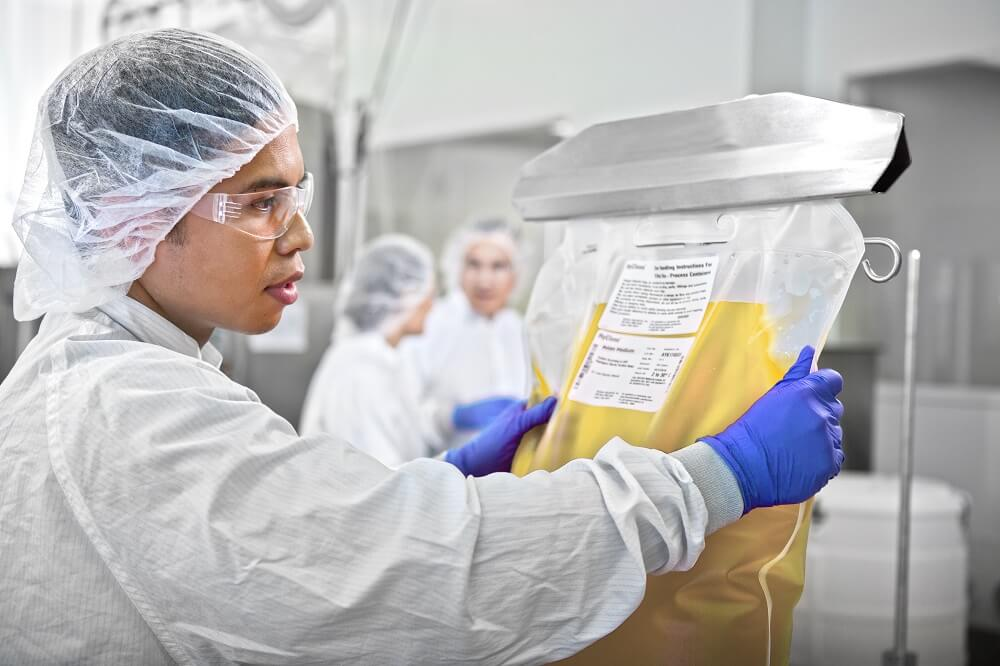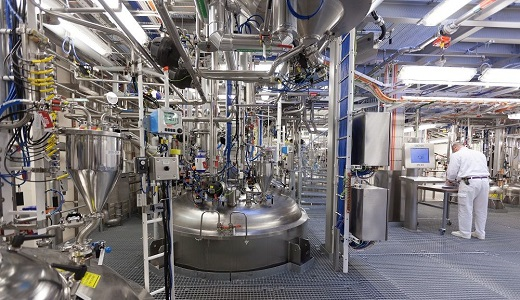By David Raw, Supplier Risk Management Leader and Andrew Humpherys, Security of Supply Program Leader, Cell Culture Media, Cytiva
A little over a decade ago, the pharmaceutical industry was shaken when adulterated imported heparin caused death and injury. Investigation into these adverse events revealed that a similar but toxic compound was used to manufacture the culpable batches of blood thinning medication. Even though the Heparin crisis was not connected to Cytiva, this crisis served as an industry eye-opener to the need for increased supply chain security and transparency.
How did a lethal heparin formulation make it past regulated checkpoints and into the clinic? And how can the industry prevent such an occurrence from happening again?
Biologics demand heightened material control
In the heparin case, the answers narrowed toward a need for more robust raw material standards, traceability, incoming material testing capabilities, documentation, and diversity of supply.
To maintain the bench-to-bedside continuum, companies must critically examine their supply chains and act to mitigate exposure to adverse supply events. Qualifying two suppliers, increasing capacity, implementing a scorecard methodology for strategic suppliers, and surveying suppliers for their number of production lines are all important ways to guarantee steady supply of materials and technologies – but we must ensure close attention is also paid to raw materials.

Fig 1. A thorough understanding of raw material characteristics and their effects on product performance will provide higher titers and yield, guarantee quality, and control costs.
An increase in the development of biological and patient-specific drugs has also reinforced the demand for heightened material controls. Raw materials like cell culture media can have a major impact on the robustness of the biomanufacturing process and, ultimately, on the drug itself.
Raw material origin and trace element compositions are useful indicators of product performance, giving information on whether the production process needs modification. A thorough understanding of raw material characteristics and their effects on product performance will provide higher titers and yield, guarantee quality, and control costs.
How to create more transparent supplier networks
At Cytiva, multi-sourcing is being used as a strategy to reduce risk. The mapping process helps identify, evaluate, and qualify second suppliers to maintain operations should materials became unavailable from a primary supplier. But this exercise is not always as straightforward as it seems.
During the mapping of its cell culture raw material supply base, our sourcing team managed to obtain a more complete picture of our supply chain. The mapping process revealed that, in some cases, suppliers were repacking or retesting materials. By following the FDA’s quality system regulations1, these suppliers were legitimately claiming manufacturer status. In practice, this means that some distributors and suppliers were acquiring their raw materials from the same manufacturing source.
Careful analysis of this kind of information is required to ascertain true risk levels, allowing appropriate mitigation plans to be developed. To address this issue, the team decided to focus on finding and qualifying true secondary source suppliers to bolster our organizations drive toward supply chain security.

Fig 2. On-site testing prevents contaminated materials from entering the workflow and allows for earlier planning and inventory adjustments should anticipated raw materials be deemed unsuitable.
With multiple active options for suppliers in place, testing and verification of components then confirm the consistent reliability of incoming goods. To ensure early identification of substandard materials, the team tests quality metrics at delivery versus the static snapshot provided in a certificate of analysis. On-site testing prevents contaminated materials from entering the workflow and allows for earlier planning and inventory adjustments should anticipated raw materials be deemed unsuitable.
Scientists must determine methods for impurity detection before defining acceptable specification limits. Permissible trace element concentrations are established based on the risk posed to final product performance. With this expanding knowledge comes evolving specifications and improved product consistency.
In learning from the heparin case, our cell culture media team also began focusing on a more in-depth scrutiny of our supply chain and requiring tier 1 and tier 2 supplier transparency where possible. Lot specifications were made readily available to technical support teams, allowing customers access to key metrics specific to their product. Disclosing potential modifications in material characteristics or processing ahead of time allows for proactive problem solving versus reactive firefighting.
We are actively working to increase supply chain transparency for all our customers across all our product areas. To deliver the high-quality, low-risk Fetal Bovine Serum (FBS) products needed in the production of vaccines and biopharmaceuticals, we have implemented an independent test-based traceability program with Oritain to authenticate the country of origin. As different countries of origin present different levels of risk for virus contamination, Oritain is testing batch samples of FBS from Australia, New Zealand, and the United States. Customers are then able to retrieve an independent verification certificate linked to the serum lot they have purchased.
Increased molecular diversity can create purification challenges
Chromatography unit operations are usually robust to variability in chromatography resin attributes, such as ligand density. There are cases, however, for which variability in resin attributes coupled with process parameters have impacted product quality and/or process performance. Also, increasing molecular diversity might generate more delicate purification challenges that demand a greater understanding of chromatographic unit operations, including resins.

Fig 3. Our site in Uppsala has one of the largest manufacturing facilities for chromatography resins in the world.
To determine when to include resin attributes as part of process characterization, a structured risk-based approach is recommended. This deeper process understanding enables the development of control strategies based on quality-by-design principles. Quality by design helps mitigate the effect of variation in process parameters or within the limits of a resin manufacturer’s specification. Ultimately, this strategy will ensure that the chromatography process remains robust and predictable at full manufacturing scale. To support this work, we have launched Process Characterization Kits to study resin variability during process characterization.
We have also implemented a second supplier for agarose, a seaweed-based product that serves as a key raw material for our chromatography resins. When comprehensive studies and evaluations revealed that the quality of the seaweed can affect the quality of the resin, we traced the origin of the agarose and established relationships with suppliers in every sub-step of the supply chain. Emphasizing the importance of the seaweed to the farmers supplying it helped reinforce their commitment to maintaining the highest quality.
Implementing protocols focused on tracking and tracing, assessing for and mitigating risk, and promoting supply chain transparency has contributed to a more robust end-to-end supply landscape – but the industry has room to push even further. We are continuously working to find and incorporate the many more ways raw material information can be utilized to inform the supply chain and improve product safety.
Supply chain of the future – it’s coming, and it’s digital
Digital supply chain transformations are in the pipeline and primed to elevate supply chain logistics and supplier risk management. Moving away from paper certificates of analysis to tamper-proof digital documents will provide manufacturers with immediate access to critical quality data prior to production.
With quality data readily available, operations can proactively adapt and anticipate necessary changes based on the characteristics of incoming raw materials. Additionally, the ability to track performance and analyze raw material and process variable effects over time will empower the manufacturer to gain new insights, optimize their processes, and generate a more predictable matrix.

Fig 4. We have increased the annual production capacity of powdered cell culture media by tenfold in our facility in Pasching, Austria.
We have announced a digital data exchange collaboration program with Amgen. This program will focus on using advanced data analytics to better understand the relationship between raw material variability and process performance during the manufacture of biologic medicines. As a part of this initiative, Cytiva and Amgen will be installing a seamless connection for data transfer between Cytiva's manufacturing sites and Amgen’s innovative process development center in Cambridge, MA.
This program represents the next step in optimizing digital capabilities to help biomanufacturers gain more understanding of the impact that raw materials have on biomanufacturing process performance, products, and patients.
New capabilities pave the way for improved raw material control
By assessing risk in advance, the impact of raw material variability and availability can be determined and planned for. New knowledge, analytical capabilities, manufacturing technology, and industry consciousness are contributing to a more transparent and functional supply chain, but there is still much work to be done. Reducing overall risk and addressing the current limitations and challenges of supply chain management will take a concerted industry effort.
Biopharma must be willing to learn from prior mistakes and reach further to gain a true understanding of the bigger picture. With shared ideas for improvement and modifying current practices, we can increase the likelihood of collective success in the inevitable face of change.
- FDA.gov. CFR 21 820 Quality System Regulation. https://www.accessdata.fda.gov/scripts/cdrh/cfdocs/cfcfr/CFRSearch.cfm?CFRPart=820. Updated April 1, 2019. Accessed January 8, 2020.
FAQ
Where are our raw materials coming from, and can we trace each raw material back to its original source?
These were the initial questions asked by Cytiva's cell culture media customers after purposefully adulterated heparin made it to market. Cytiva started rigorously tracking basic supplier information and completing supplier maps and supply chain analyses. Additional actions ensured suppliers were using the same materials, processes, and equipment to produce incoming raw materials.
After a close investigation into media attributes and existing practices, this work proved to be a significant but preliminary step toward achieving a supply chain with proactive traceability and transparency.
What components do our raw materials contain?
While product contamination can originate from a deliberate attempt to modify a product, issues with raw material variability span beyond the realm of nefarious activities. For example, cell culture media products are highly complex and can be comprised of up to 100 components, some of which are formulated for optimal product performance. Other compounds include contaminants, such as metals, trace elements, and residual solvents, introduced from raw material sources, manufacturing inadequacies, or storage and handling. This inherent raw material variability can cause inconsistent media attributes between batches, even when the same suppliers and processes are used in production.
When it comes to chromatography resins, similar challenges manifest. The importance of the chemicals supporting process activation in manufacture cannot be underestimated. Cytiva's teams work cross-functionally to assess the raw material criticality as it relates to finished-good performance and consistency. We then develop appropriate measurements, controls, and risk mitigation activities to ensure products meet customers’ expectations and support the safe delivery of care to patients.
What effect does variation have on cell culture media performance?
Raw material inconsistencies within a biomanufacturing process can cause production variability for pharmaceutical customers. Even the slightest impurity can influence the ability of cell culture media to support cell growth in later stages of development or therapy production. Unpredictable performance can potentially affect drug quality and predictable yields, reduce manufacturing uptime, increase overall costs, decrease customer confidence, and negatively impact patients.
One of the most meaningful paradigm shifts in the biopharma industry in recent times has been the realization among therapy researchers and producers that close control of raw material parameters is essential in securing repeatable process performance, from the research lab to process development and full-scale production.